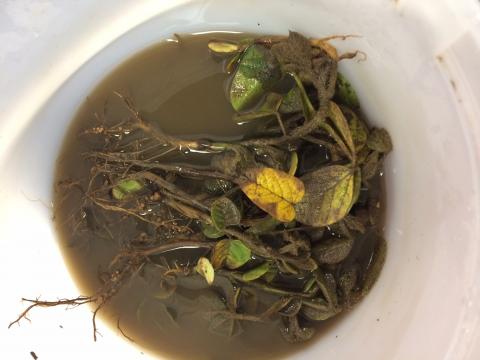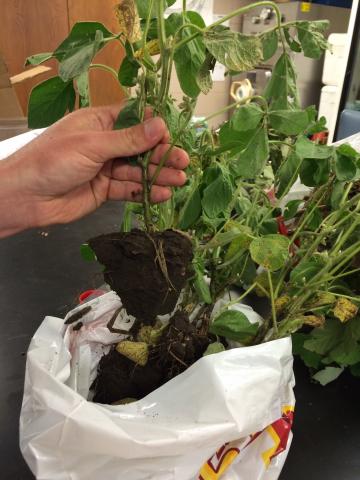Source: Iowa State University Extension and Outreach
By Ed Zaworski and Lina Rodriguez Salamanca, Plant Pathologists
The first step in managing a plant or insect problem is to know what is causing the symptoms observed. An accurate pathogen or insect pest identification is one of the most important integrated pest management (IPM) tactics leading to a successful management strategy.
So how do you determine what is causing a particular set of symptoms? Sometimes different pests, diseases and disorders cause similar symptoms. How can these be differentiated?
One option that many farmers and agribusiness affiliates take advantage of is the Iowa State University Plant and Insect Diagnostic Clinic (PIDC). At the PIDC, we diagnose plant problems, identify insects and provide management advice. Our team in the lab includes an entomologist, Laura Jesse and two plant pathologists, Lina Rodriguez Salamanca and Ed Zaworski. As diagnosticians, it is our job to help solve the issues for you. Send us a sample, we are here to help.
Submitting a Good Sample
Once you have decided to send a sample, it is very important to submit a sample that is of good quality.
If the sample we receive is in poor condition, we may not be able to make an accurate diagnosis. Also, if the sample is allowed to degrade (left in a warm vehicle for example), secondary fungi and bacteria can colonize on the plant sample tissue. If these organisms move in, it is often difficult to detect the pathogen or insect pest that was harming your crops to begin with.
 Example of a poor sample submission.
Example of a poor sample submission.
In many situations, it is important to submit the whole plant, especially during the early stages of plant development. Sending the whole plant gives us the opportunity to examine both the roots and the foliage of the plant. When you send the entire plant, it is a good idea to dig up the roots rather than to pull the plant from the ground. Pulling a plant from the ground can rip away the infected tissue, which reduced the likelihood of us finding the pathogen. An important tip: when digging up a root ball, wrap the soil in something like newspaper or a plastic bag. Wrapping up the roots will keep the soil off the plant foliage.
 Example of a good sample submission.
Example of a good sample submission.
We need plenty of plant tissue to work with as it allows us to see a range of symptoms and run multiple types of diagnostic tests. When submitting foliage samples, make sure to gather lots of plant tissue. Send at least 6-8 plants when sending a whole plant sample.
As a reminder, we do not test for herbicide or other residues in plant tissue, but we can examine the symptoms to determine if it appears to match symptoms associated with exposure to herbicides or other chemicals.
General Tips
- DO NOT add water to the sample.
- Submit sample in plastic bags rather than paper (paper bags dry out the samples).
- Wrap root balls in newspaper or plastic to keep the soil separate from the foliage.
- Take pictures in the field, especially of symptom patterns, and close-ups of symptom details (see our guide on how to send us sample http://www.ipm.iastate.edu/ipm/info/files/documents/page/262/466.pdf).
- Provide lots of written information — the more, the better: seed treatment, crop variety or cultivar, chemical application history, the pattern observed or distribution in the field, crop history (or rotation), etc.
- More general tips can be found at: http://www.ipm.iastate.edu/ipm/info/submit/plant#General_Tips_for_Sample_Submission_including_packaging_and_mailing
Clinic Update
The PIDC has made 41 diagnoses on corn and soybeans in 2015, and this number is growing. There have been quite a few cases of herbicide damage and some root rot pathogens (Table 1.). We do not test for herbicide residue in plant tissue so assessments of herbicide damage are based only on visual symptoms.
With the rain and the high humidity that has been sweeping across Iowa, we expect to start seeing more foliar disease symptoms coming to the clinic. We have already received a handful of northern corn leaf blight samples as well as our first Goss’s wilt sample on corn.






Post a comment
Report Abusive Comment